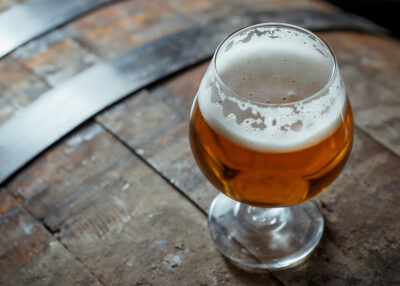Cask ale is one of the oldest and most respected styles in the world of craft beer. Unlike the modern beers often seen on the shelf, cask ale offers a taste of tradition, craft and a lot of patience. But what makes this unfiltered, naturally carbonated beer so unique, and why should beer lovers appreciate it?
Let’s take a deep dive into the world of cask ale.
What is Cask Ale?
Cask ale, also known as “real ale,” is beer that’s brewed and conditioned in casks (wooden or metal containers) without additional carbon dioxide pressure. It’s served naturally carbonated, meaning it relies on fermentation in the cask to develop its bubbles. This method produces a beer that’s fuller in flavor, with a smooth texture and a more complex mouthfeel compared to the carbonated keg beers most are familiar with.
But it’s not just about the lack of artificial carbonation. Cask ale is often unfiltered and unpasteurized, which means it maintains more of the yeast, hop and malt character. It’s a beer that evolves as it ages, even in the glass, creating a unique drinking experience every single time.
The History of Cask Ale
The tradition of cask ale goes back hundreds of years. Before refrigeration and modern brewing technology, cask beer was the way beer was stored and transported. In fact, many early British pubs had beer cellars, where casks were stored to ferment and condition in the cool, dark space.
While most modern beers are brewed, packaged and served quickly to maintain freshness, cask ales are all about slow fermentation and maturation. They often take days, weeks, or even months to fully develop their flavors, which is why many enthusiasts see cask ale as a true labor of love.
How Cask Ale is Brewed
The brewing process for cask ale doesn’t differ too drastically from other beers, but it’s the fermentation and serving methods that set it apart.
- Brewing: Cask ales start out just like any other beer, using water, malt, hops and yeast. The beer is brewed and then put into a cask, where the fermentation continues.
- Secondary Fermentation: This is where the magic happens. The beer undergoes secondary fermentation inside the cask, often lasting several days. This slow process naturally carbonates the beer, giving it a soft effervescence and a smooth mouthfeel. No artificial carbonation is added.
- Conditioning: Once fermentation is complete, the beer is allowed to mature in the cask. Over time, the flavors deepen and blend, with the yeast and hop characters becoming more pronounced. Some brewers may even add extra ingredients during this stage, like fruit, spices or herbs.
- Serving: When served, cask ale should be kept at a cool temperature (but not too cold) and dispensed via a hand pump or gravity. This process, known as “cask ale dispense,” preserves the beer’s natural carbonation and gives it a fuller, fresher taste.
Key Characteristics of Cask Ale
Cask ale has a distinct profile that sets it apart from other types of beer. Here’s what you can expect:
- Appearance: Cask ales are often more hazy than filtered beers due to the unfiltered nature of their brewing process. They range from pale golden hues to deep amber, and the beer may have a slight natural cloudiness.
- Aroma: Without heavy filtering, cask ale retains more of its hop, malt and yeast characteristics, giving it a rich nose that might feature fruity, floral and biscuity notes.
- Flavor: Cask ales are generally less carbonated than keg beers, which gives them a smooth, rounded flavor. They can be light and delicate or rich and malty, with a subtle balance between hop bitterness and malt sweetness.
- Mouthfeel: Without excessive carbonation, cask ale feels softer and smoother. This lack of fizz creates a more velvety mouthfeel, making it incredibly easy to drink and perfect for savoring over a longer session.
- ABV: Most cask ales are moderate in alcohol content, typically between 3% and 5%. This makes them perfect for session drinking, allowing you to enjoy a few pints without feeling overwhelmed.
Pairing Cask Ale with Food
Cask ale is versatile when it comes to food pairings, with its balanced malt and hop characteristics making it suitable for a wide range of dishes. Here are some ideas:
- Pub Classics: Cask ale pairs perfectly with hearty pub fare. Think fish and chips, or shepherd’s pie. The maltiness of the beer complements rich, savory dishes.
- Cheese: The smooth, often lightly fruity flavor of cask ale works wonderfully with a variety of cheeses. A sharp cheddar, creamy brie or nutty Gruyère will all make for fantastic pairings.
- Grilled Meats: Cask ale can be a great companion to grilled meats like sausages, steaks or burgers. The beer’s mellow bitterness helps cut through the richness of the meat, balancing each bite.
- Spicy Dishes: If you’re tackling a spicy curry or chili, a cask ale with a lighter hop character can offer a refreshing contrast to the heat, helping to cool the palate between bites.
Cask ale is a return to simplicity, craft and tradition. Whether you’re a seasoned beer connoisseur or a curious newcomer, there’s something special about a pint of cask ale.
Cheers!
